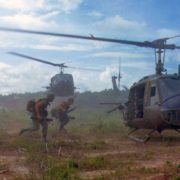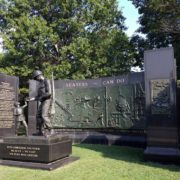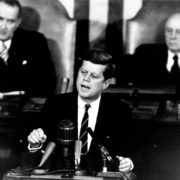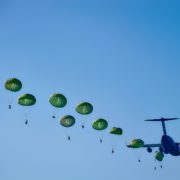What caused the end of the Golden Age of Capitalism?
What led to the end of the Golden Age of Capitalism? As the world observed a sustained period of phenomenal growth that accelerated the pace of economic development in many countries, problems began to emerge. The feasibility of existing international financial systems and frameworks, such as the Bretton Woods System, began to exhibit flaws that hindered growth. Eventually, the Golden Age of Capitalism came to an end.
Topic of Study [For H2 History Students]: Paper 1: Understanding the Global Economy (1945-2000) Section B: Essay Writing Theme II Chapter 2: Reasons for problems of the global economy
In the following section, we will focus on the key factors that have contributed to the decline in the global economy.1. Collapse of the Bretton Woods System [15 Aug 1971] Initially, the Bretton Woods System was essential in creating financial stability through the fixed exchange rate system that pegged the U.S. dollar against gold [USD 35 per ounce of gold]. However, excessive domestic spending [Great Society program] and military expenditure in foreign campaigns [Vietnam War] caused the American dollar to be overvalued. This meant that USA was unable to provide adequate gold to match the vast volume of dollars in international circulation.
As a result, speculators foresaw the U.S government seeking to devalue USD, creating a widespread panic to sell the currency. Market pessimism was pervasive. Eventually, it culminated in the historic moment in August 1971, when American President, Richard Nixon, declared the suspension of the dollar-to-gold convertibility, signalling the end of the fixed exchange rate system. As such, many countries were given the choice to adopt fixed or flexible exchange rates, resulting in declining stock prices, rising oil prices and bank failures.2. Twin Oil Shocks [1973 and 1979] In addition to collapse of the Bretton Woods System, there were two disastrous events that led to skyrocketing oil prices and declining economies, also known as the Twin Oil Shocks of the 1970s.
The first oil shock took place in 1973-1974, which was attributed to the actions of the Organisation of Petroleum Exporting Countries (OPEC, in short). The OPEC sought to undermine USA for its provision of support to Israel in the Yom Kippur War [part of the longstanding Arab-Israeli War] by imposing an oil embargo. As a result of the sudden artificial shortage of oil, oil prices surged from $3 per barrel to $12 per barrel in one year. Consequently, the increase in oil prices had devastating impacts on the affected economies. Given that oil was an essential resource for production, many businesses declined. In contrast, OPEC benefited from the gains in revenue due to the sale of oil at artificially high prices.
The second oil shock occurred in 1979 due to the Iranian Revolution. Oil production was once again cut, causing an increase in price of oil. This had a severe impact on the developed economies, especially USA. Firms in oil-dependent industries, like car manufacturers, were undermined by this development. Furthermore, consumers had difficulty coping with the increase in price of fuel for domestic usage.3. Third World Debt Crisis [1980s] The Third World Debt Crisis was a regional economic challenge that plagued developing nations in the early 1980s. Countries, such as Mexico, were unable to finance the external debts. Although international financial institutions, like the World Bank and International Monetary Fund (IMF) extended loans and aid to these countries, their efforts were inadequate to resolve the persistent debts.
Furthermore, the twin oil shocks of the 1970s had worsened the government deficits, causing many Third World countries to suffer from the longstanding debt issue. For example, the Mexican government’s budget deficit was at 16.3% of its Gross National Product (GNP). Consequently, economic activities declined in these countries, causing growth rates to slow down.4. Advent of Trade Protectionism Although the General Agreement on Tariffs and Trade (GATT) was the reason for the economic boom that started the Golden Age of Capitalism, liberalisation of world trade did not benefit all countries evenly. In particular, developing countries were incurring losses, while developed nations gained from the freer movement of labour, commodities and capital.
Besides, the U.S. economic slowdown in the 1970s and emergence of developed countries, like Germany and Japan, as well as the ‘Four Asian Tigers’, influenced the shift in economic stance by the American government. As such, trade protectionism was imposed to insulate the domestic economy from the adverse effects of economic competition. For example, the American government introduced a Voluntary Restraint Agreement (VRA) that forced Japan to cut down its exports of automobiles into USA. Developed countries, like UK, raised tariffs. As such, this artificial trade barriers began to undo the beneficial impacts of the free trade agreements, causing a decline in global output and the subsequent slowdown in economic development.What’s Next? Given this understanding of the devastating impacts that caused the decline in the global economy, you should examine the following questions and think about the significance of the above-mentioned factors to reinforce your knowledge comprehension to better apply them to your SBQ answers: – Why was the Golden Age of Capitalism not sustainable? – What were the internal and external factors that contributed to the decline in the global economy? [class discussion]
The H2 and H1 History Tuition feature online discussion and writing practices to enhance your knowledge application skills. Get useful study notes and clarify your doubts on the subject with the tutor. You can also follow our Telegram Channel to get useful updates. We have other JC tuition classes, such as JC Math Tuition and JC Chemistry Tuition. For Secondary Tuition, we provide Secondary English Tuition, Secondary Math tuition, Secondary Chemistry Tuition, Social Studies Tuition, Geography, History Tuition and Secondary Economics Tuition. For Primary Tuition, we have Primary English, Math and Science Tuition. Call 9658 5789 to find out more.








